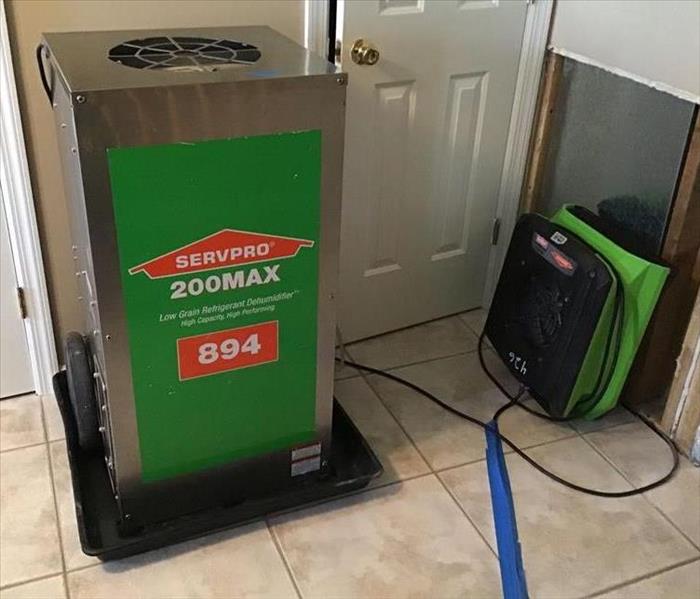SERVPRO of Point Pleasant Has the Right Equipment For Every Water Damage Emergency
9/16/2021 (Permalink)
 SERVPRO of Point Pleasant professionals have the resources and restoration equipment to help you take back control of your life.
SERVPRO of Point Pleasant professionals have the resources and restoration equipment to help you take back control of your life.
The right equipment is vital for timely mitigation. SERVPRO of Point Pleasant understands that using the proper equipment makes a measurable difference in reducing claims loss expense. When time matters, technology and equipment must be counted on to perform.
Detection Equipment
Scoping involves locating the areas of the structure affected by water and defining the extent to which the structure and contents have absorbed moisture. Moisture detection devices are also used to verify that an environment has been dried thoroughly.
- Moisture Sensors are used to detect moisture in carpets, baseboards and walls.
- Moisture Meters are used to determine the actual moisture content of various materials. The moisture tester provides accurate moisture readings that enable the SERVPRO® Franchise Professional to monitor the drying process.
- Thermohygrometers measure both temperature and relative humidity. Capturing these two readings, a SERVPRO® Franchise Professional using a psychrometric chart can calculate specific humidity, dew point and vapor pressure.
Extraction Equipment
The most effective method of removing moisture from a structure is extraction. This is why it is critical to respond quickly to a water damage and to provide emergency mitigation services. When the water is extracted quickly, the environment can usually be dried much faster.
- Extractors are used in cleaning carpets and upholstery and in removing water from floors following a water damage. Extractors can either be truck-mounted or portable, allowing for greater access inside structures.
Air Moving Equipment
Air movers are used in water damage restoration to enhance evaporation at the surface level, thereby reducing drying time. As airflow at the surface level increases, the moisture in the air increases. This moisture is then eliminated via the use of dehumidification equipment.
Dehumidification Equipment
By extracting water vapor from the air, dehumidifiers lower the relative humidity, which in turn increases the rate of evaporation. In a water damaged structure, dehumidifiers pull in the moist, humid air and then discharge dry, warm air. The dry air acts like a sponge, absorbing moisture from wet materials. SERVPRO of Point Pleasant use two types of dehumidifiers:
- Refrigerant Dehumidifiers work similarly to air conditioners.
- Desiccant Dehumidifiers use chemicals, called desiccants, that readily absorb moisture from the air. Deodorization.
Deodorization Equipment
- Ultra Low Volume (ULV) Foggers will atomize liquid deodorizing agents, producing a fine mist that easily penetrates sites where odor-causing residues accumulate. The device can also be used to inject fungicides and disinfectants into wall cavities and other difficult-to-access areas.
- Thermal Foggers dispense solvent-based products in large volume, dense fogs suitable for confined areas. The fog consists of tiny particles of deodorant solution that pair with and neutralize odor-causing particles.





 24/7 Emergency Service
24/7 Emergency Service